National Gallery of Art, Washington (D. C.)
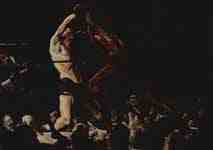
Both are club members, George Wesley Bellows
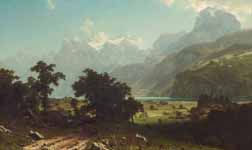
Lake Lucerne, Albert Bierstadt
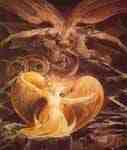
The Great Red Dragon and the Woman, William Blake
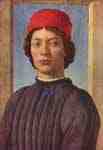
Portrait of a young man with red cap, Sandro Botticelli

The beach at Trouville, Eugène Boudin
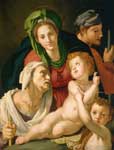
The Holy Family, Bronzino
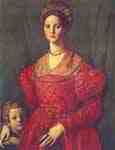
Portrait of a young woman with her son, Bronzino
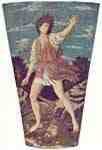
David, Andrea del Castagno

Death and the Miser, Hieronymus Bosch
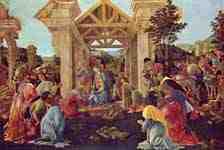
Adoration of the Magi (Washington), Sandro Botticelli
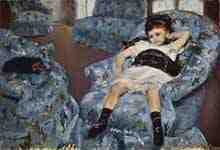
Little girl in blue armchair, Mary Cassatt

The boat trip, Mary Cassatt

Still life with apples and peaches, Paul Cézanne
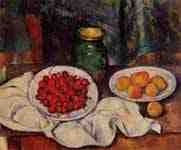
Still life with cherries and peaches, Paul Cézanne
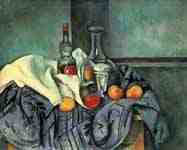
Still life , peppermint bottle, Paul Cézanne
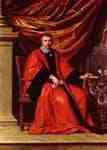
Omer Talon, Philippe de Champaigne

The House of Cards, Jean-Baptiste Siméon Chardin
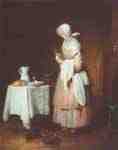
The caring maid, Jean-Baptiste Siméon Chardin
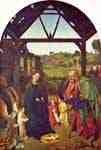
Nativity, Petrus Christus
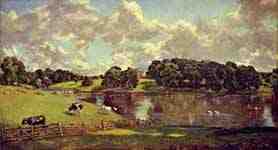
Wivenhoe Park, John Constable
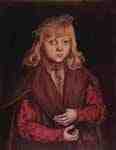
Portrait of a Saxon prince, Lucas Cranach the Elder
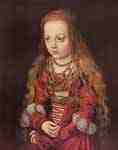
Portrait of a Saxon princess, Lucas Cranach the Elder
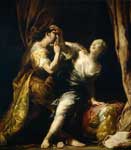
Tarquin and Lucretia, Giuseppe Maria Crespi

Rest on the Flight to Egypt, Gerard David

Portrait of Napoleon in his study, Jacques-Louis David
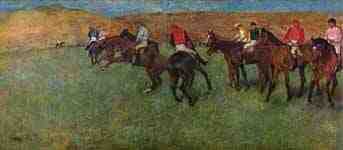
Horse racing prior to the start, Edgar Germain Hilaire Degas
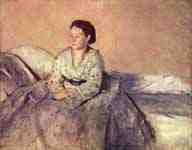
Portrait of Madame René de Gas, Edgar Germain Hilaire Degas
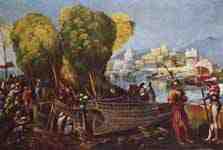
The departure of the Argonauts, Dosso Dossi
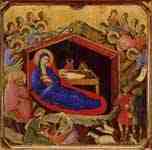
Nativity, Duccio
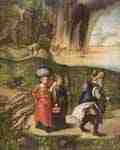
Lot's escape, Albrecht Dürer
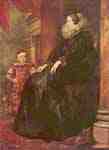
Portrait of Paolina Adorno, Anthony van Dyck
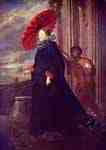
Portrait of Marchesa Elena Grimaldi, Anthony van Dyck

Portrait of Marchesa Balbi, Anthony van Dyck

Portrait of Queen Henrietta Maria , with dwarf, Anthony van Dyck
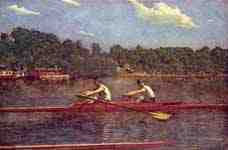
The Biglin Brothers Racing, Thomas Eakins

Master John Heathcote, Thomas Gainsborough
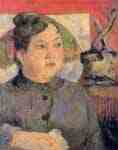
Portrait of Mme Alexandre Kohler, Paul Gauguin
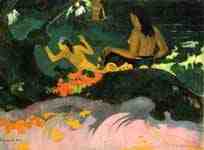
Seaside ( Fatata te miti ), Paul Gauguin
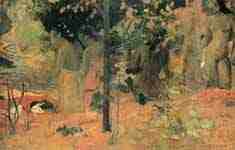
Bathers, Paul Gauguin
The dance of the little Breton Women, Paul Gauguin
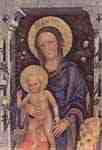
Madonna, Gentile da Fabriano
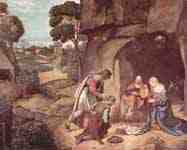
Adoration of the Shepherds, Giorgione

Madonna with Child, Giotto di Bondone
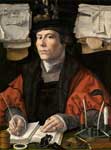
Portrait of a Merchant, Jan Gossaert

St Martin and the Beggar, El Greco

St Martin and the Beggar, El Greco

The Virgin and Child with St Martina and St Agnes, El Greco

St Ildefonso, El Greco
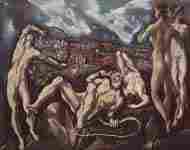
Laocoön, El Greco

Saint Jerome Penitent, El Greco
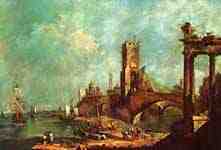
Portico at a towered city, Francesco Guardi
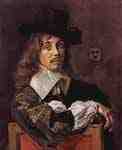
Portrait of Balthasar Coymans, Frans Hals
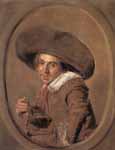
A Young Man in a Large Hat, Frans Hals
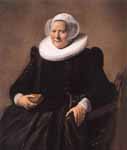
Portrait of a Seated Woman, Frans Hals
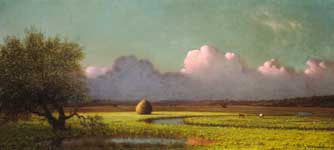
Sunlight and Shadow: The Newbury Marshes, Martin Johnson Heade
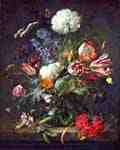
Vase, Jan Davidsz de Heem

Breezing Up. A Fair Wind, Winslow Homer

Lackawanna Valley, George Inness

Wild Strawberries and a Carnation in a Wan-Li Bowl, Jacob van Hulsdonck

Scenes from a Legend , Giovanni di Lorenzo Larciani
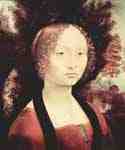
Portrait of a noblewoman (Ginevra Benci? ), Leonardo da Vinci
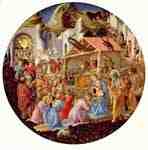
The Adoration of the Magi, Tondo, Fra Filippo Lippi
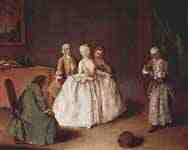
Hit the Pot, Pietro Longhi
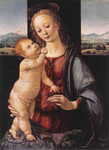
Madonna and Child with a Pomegranate, Lorenzo di Credi
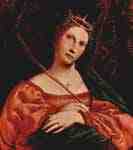
St. Catherine of Alexandria, Lorenzo Lotto

Cephalus and Pan at the Temple of Diana, Bernardino Luini
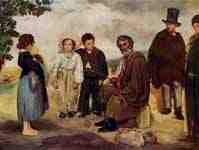
The Old Musician, Edouard Manet
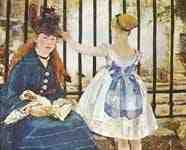
Railway, Edouard Manet

Plum, Edouard Manet
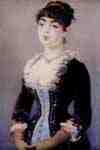
Portrait of Madame Michel - Lévy, Edouard Manet
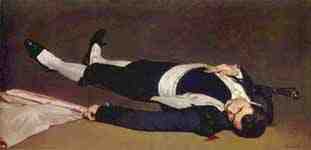
Dead Torero, Edouard Manet
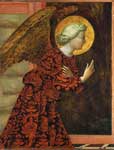
Angel of the Annunciation, Masolino
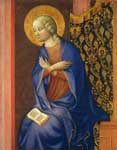
Virgin of the Annunciation, Masolino
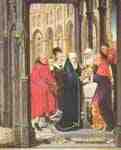
Presentation of Christ in the Temple, Hans Memling
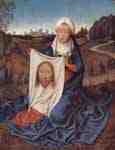
Saint Veronica, Hans Memling

Gypsy woman with child, Amedeo Modigliani
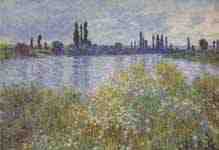
On the banks of the Seine at Vetheuil, Claude Monet

Camille Monet and son Jean on the hill, Claude Monet

Green River Cliffs, Wyoming, Thomas Moran
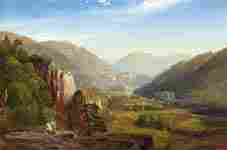
The Juniata, Evening, Thomas Moran

The Much Resounding Sea, Thomas Moran

Girl at the Window, Bartolomé Esteban Perez Murillo
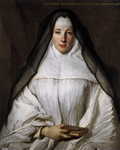
Elizabeth Throckmorton, Canoness of the Order of the Dames Augustines Anglaises, Nicolas de Largillière
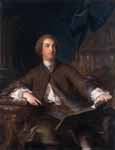
Joseph Bonnier de la Mosson, Jean-Marc Nattier
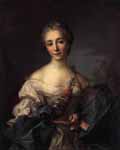
Portrait of a Young Woman, Jean-Marc Nattier
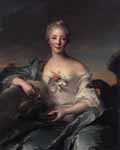
Madame Le Fčvre de Caumartin as Hebe Jean-Marc Nattier

Madonna, Pietro Perugino
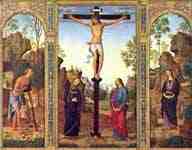
Galitzine Triptych, Pietro Perugino

Visitation, Piero di Cosimo

Portrait of Niccolò Ardinghelli, Jacopo Pontormo

The Small Cowper Madonna, Raphael
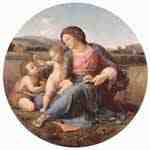
Madonna Alba, Raphael

Ballet dancer, Pierre-Auguste Renoir

Diana as huntress, Pierre-Auguste Renoir

St. Helena finds the Holy Cross, Sebastiano Ricci
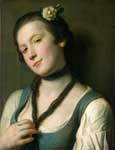
A Girl with a Flower in Her Hair , Pietro Rotari
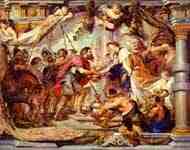
Abraham's encounter with Melchizedek, Peter Paul Rubens
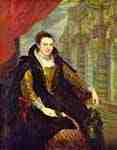
Portrait of Isabella Brandt, Peter Paul Rubens
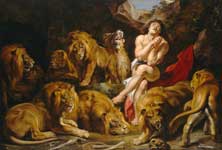
Daniel in the Lions' Den, Peter Paul Rubens

The Banks of the Oise, Alfred Sisley
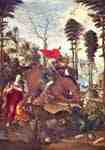
St. George, Sodoma

Saint Mary Salome and Her Family, Bernhard Strigel

Saint Mary Cleophas and Her Family, Bernhard Strigel
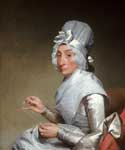
Portrait of Mrs. Richard Yates, Gilbert Stuart

The Skater, Gilbert Stuart

Portrait of Eliza Ridgely (The lady with the harp), Thomas Sully
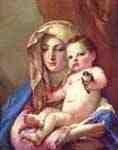
Madonna of the Goldfinch, Giovanni Battista Tiepolo

Christ at the Sea of Tiberias, Jacopo Tintoretto
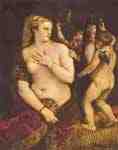
Venus with mirror, Titian
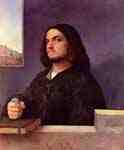
Portrait of a Venetian nobleman, Titian
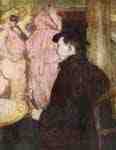
Maxim Dethomas, Henri de Toulouse-Lautrec

At the Moulin Rouge, the beginning of the quadrille, Henri de Toulouse-Lautrec

St. Francis of Assisi, Cosmè Tura

St. Maurelius of Ferrara, Cosmè Tura
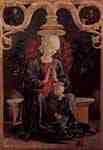
Madonna In The Garden, Cosmè Tura
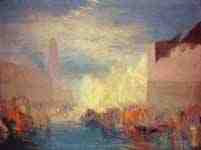
Venice, Joseph Mallord William Turner
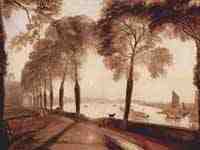
Mortlake Terrace, Joseph Mallord William Turner

Woman Sewing, Diego Velázquez
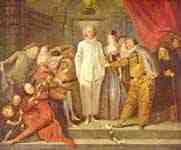
Italian comedians, Antoine Watteau

Portrait of George W. Vanderbilt, James Abbott McNeill Whistler

Mother of Pearl and Silver The Andalusian, James Abbott McNeill Whistler
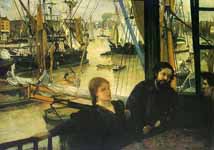
Wapping on Thames, James Abbott McNeill Whistler
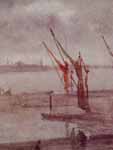
Grey and Silver: Chelsea Wharf, James Abbott McNeill Whistler
Fine Art Prints | Greeting Cards | Phone Cases | Lifestyle | Face Masks | Men's , Women' Apparel | Home Decor | jigsaw puzzles | Notebooks | Tapestries | ...
The National Gallery of Art, and its attached Sculpture Garden, is a national art museum in Washington, D.C., located on the National Mall, between 3rd and 9th Streets, at Constitution Avenue NW. Open to the public and free of charge, the museum was privately established in 1937 for the American people by a joint resolution of the United States Congress. Andrew W. Mellon donated a substantial art collection and funds for construction. The core collection includes major works of art donated by Paul Mellon, Ailsa Mellon Bruce, Lessing J. Rosenwald, Samuel Henry Kress, Rush Harrison Kress, Peter Arrell Brown Widener, Joseph E. Widener, and Chester Dale. The Gallery's collection of paintings, drawings, prints, photographs, sculpture, medals, and decorative arts traces the development of Western Art from the Middle Ages to the present, including the only painting by Leonardo da Vinci in the Americas and the largest mobile created by Alexander Calder.
The Gallery's campus includes the original neoclassical West Building designed by John Russell Pope, which is linked underground to the modern East Building, designed by I. M. Pei, and the 6.1-acre (25,000 m2) Sculpture Garden. The Gallery often presents temporary special exhibitions spanning the world and the history of art.
History
File:Gallery15Urlan.ogvPlay media
National Gallery of Art
Pittsburgh banker (and Treasury Secretary from 1921 until 1932) Andrew W. Mellon began gathering a private collection of old master paintings and sculptures during World War I, but in the late 1920s he decided to direct his collecting efforts towards the establishment of a new national gallery for the United States. In 1930 Mellon formed the A. W. Mellon Educational and Charitable Trust, which was to be the legal owner of works intended for the gallery. In 1930–1931, the Trust made its first major acquisition, 21 paintings from the Hermitage Museum in St. Petersburg, including such masterpieces as Raphael's Alba Madonna, Titian's Venus with a Mirror, and Jan van Eyck's The Annunciation. (See also Soviet sale of Hermitage paintings). In 1929 Mellon had initiated contact with the recently appointed Secretary of the Smithsonian Institution, Charles Greeley Abbot, and in 1931 he was appointed a Commissioner of the Institution's National Gallery of Art. When the director of the Gallery retired, Mellon requested Abbot not to appoint a successor, because he proposed to endow a new building, with funds for expansion of the collections, which would, in effect, be a rebirth of the Gallery. Mellon's trial for tax evasion, centering on the Trust and the Hermitage paintings, caused the plan to be modified, and in 1935 he announced, in the Washington Star, his intention to establish a new gallery for old masters, separate from the Smithsonian. When quizzed by Abbot, he explained that the project was in the hands of the Trust and that its decisions were partly dependent on "the attitude of the Government towards the gift". In January 1937, Mellon formally offered to create the new Gallery, and on his birthday, 24 March 1937, an Act of Congress accepted the collection and building funds (provided through the Trust), and approved the construction of a museum on the National Mall. The new gallery was to be effectively self-governing, not controlled by the Smithsonian, but took the old name "National Gallery of Art" while the Smithsonian's gallery would be renamed the "National Collection of Fine Arts" (now the Smithsonian American Art Museum).[2][3][4]
Designed by architect John Russell Pope (who would go on to design the Jefferson Memorial), the new structure was completed and accepted by President Franklin D. Roosevelt on behalf of the American people on March 17, 1941. Neither Mellon nor Pope lived to see the museum completed; both died in late August 1937, only two months after excavation had begun. At the time of its inception it was the largest marble structure in the world. The museum stands on the former site of the Baltimore and Potomac Railroad station, most famous for being where 20th president James Garfield was shot in 1881 by Charles Guiteau, a disgruntled office seeker.[5]
As anticipated by Mellon, the creation of the National Gallery encouraged the donation of other substantial art collections by a number of private donors. Founding benefactors included such individuals as Paul Mellon, Samuel H. Kress, Rush H. Kress, Ailsa Mellon Bruce, Chester Dale, Joseph Widener, Lessing J. Rosenwald and Edgar William and Bernice Chrysler Garbisch.
The Gallery's East Building was constructed in the 1970s on much of the remaining land left over from the original congressional joint resolution. It was funded by Mellon's children Paul Mellon and Ailsa Mellon Bruce. Designed by famed architect I.M. Pei, the contemporary structure was completed in 1978 and was opened on June 1 of that year by President Jimmy Carter. The new building was built to house the Museum's collection of modern paintings, drawings, sculptures, and prints, as well as study and research centers and offices. The design received a National Honor Award from the American Institute of Architects in 1981.
The
final addition to the complex is the National Gallery of Art Sculpture
Garden. Completed and opened to the public on May 23, 1999, the
location provides an outdoor setting for exhibiting a number of pieces
from the Museum's contemporary sculpture collection.
Operations
National Gallery of Art logo.
The National Gallery of Art is supported through a private-public partnership. The United States federal government provides funds, through annual appropriations, to support the museum's operations and maintenance. All artwork, as well as special programs, are provided through private donations and funds. The museum is not part of the Smithsonian Institution.
Noted directors of the National Gallery have included David E. Finley, Jr., John Walker, and J. Carter Brown. Earl A. "Rusty" Powell III is the current director.
Entry
to both buildings of the National Gallery of Art is free of charge.
From Monday through Saturday, the museum is open from 10 a.m. – 5 p.m.;
it is open from 11 – 6 p.m. on Sundays. It is closed on December 25 and
January 1.
Architecture
"East Building" redirects here. It is not to be confused with Eastern Building.
The East Building
Exhibitions in the West Building
Exhibitions in the East Building
The museum comprises two buildings: the West Building (1941) and the East Building (1978) linked by a spacious underground passage. The West Building, composed of pink Tennessee marble, was designed in 1937 by architect John Russell Pope in a neoclassical style (as is Pope's other notable Washington, D.C. building, the Jefferson Memorial). Designed in the form of an elongated H, the building is centered on a domed rotunda modeled on the interior of the Pantheon in Rome. Extending east and west from the rotunda, a pair of high, skylit sculpture halls provide its main circulation spine. Bright garden courts provide a counterpoint to the long main axis of the building.
The West Building has an extensive collection of paintings and sculptures by European masters from the medieval period through the late 19th century, as well as pre-20th century works by American artists. Highlights of the collection include many paintings by Jan Vermeer, Rembrandt van Rijn, Claude Monet, Vincent van Gogh, and Leonardo da Vinci.
In contrast, the design of the East Building by architect I. M. Pei is rigorously geometrical, dividing the trapezoidal shape of the site into two triangles: one isosceles and the other a smaller right triangle. The space defined by the isosceles triangle came to house the museum's public functions. That outlined by the right triangle became the study center. The triangles in turn became the building's organized motif, echoed and repeated in every dimension. The building's most dramatic feature is its high atrium designed as an open interior court, it is enclosed by a sculptural space frame spanning 16,000 square feet (1,500 m2). The atrium is centered on the same axis that forms the circulation spine for the West Building and constructed in the same Tennessee marble.[6] Starting in 2005, the joints attaching the marble panels to the walls began to show signs of strain, creating a risk of panels falling off the building onto the public below. In 2008 officials decided that it would be necessary to remove and reinstall all the panels. The project is scheduled for completion in 2013.[7]
The East Building focuses on modern and contemporary art, with a collection including works by Pablo Picasso, Henri Matisse, Jackson Pollock, Andy Warhol, Roy Lichtenstein, Alexander Calder, a 1977 mural by Robert Motherwell and works by many other artists. The East Building also contains the main offices of the NGA and a large research facility, Center for Advanced Study in the Visual Arts (CASVA). Among the highlights of the East Building in 2012 was an exhibition of Barnett Newman's The Stations of the Cross series of 14 black and white paintings (1958–66).[8] Newman painted them after he had recovered from a heart attack; they are usually regarded as the peak of his achievement. The series has also been seen as a memorial to the victims of the Holocaust.[9]
The two buildings are connected by a walkway beneath 4th street, called "the Concourse" on the museum's map. In 2008, the National Gallery of Art commissioned American artist Leo Villareal to transform the Concourse into an artistic installation. Today, Multiverse is the largest and most complex light sculpture by Villareal featuring approximately 41,000 computer-programmed LED nodes that run through channels along the entire 200-foot (61 m)-long space.[10] The concourse also includes the food court and a gift shop.
The
final element of the National Gallery of Art complex, the Sculpture
Garden was completed in 1999 after more than 30 years of planning. To
the west of the West Building, across Seventh Street, the 6.1 acres
(25,000 m²) Sculpture Garden was designed by landscape architect Laurie
Olin[11] as an outdoor gallery for monumental modern sculpture and
includes plantings of native American species of canopy trees,
flowering trees, shrubs, ground covers, and perennials. A circular
reflecting pool and fountain form the center of its design,
complemented by great arching pathways of granite and crushed stone.
(The pool is transformed into an ice-skating rink during the winter)
The exhibited sculptures in the surrounding landscaped area include
pieces by David Smith, Mark Di Suvero, Roy Lichtenstein, Sol LeWitt,
Tony Smith, Roxy Paine, Joan Miró, Louise Bourgeois, and Hector
Guimard.[12]
Renovations
The NGA's West Building was renovated from 2007 to 2009. Although some galleries closed for periods of time, others remained open.[13]
Beginning in 2011, NGA undertook an $85 million restoration of the East Building's facade.[14] The East Building is clad in 3-inch (7.6 cm) thick pink marble panels. The panels are held about 2 inches (5.1 cm) away from the wall by stainless steel anchors. Gravity holds the panel in the bottom anchors (which are placed at each corner), while "button head" anchors (stainless steel posts with large, flat heads) at the top corners keep the panel upright. Mortar was used on the gravity anchors to level the stones. Joints of flexible colored neoprene were placed between the panela. This system was designed to allow each panel to hang independent of its neighbors, and NGA officials say they are not aware of any other panel system like it. Unfortunately, many panels were accidentally mortared together. Seasonal heating and cooling of the facade, infiltration of moisture, and shrinkage of the building's structural concrete by 2 inches (5.1 cm) over time caused extensive damage to the facade. In 2005, regular maintenance showed that some panels were cracked or significantly damaged, while others leaned by more than 1 inch (2.5 cm) out from the building (threatening to fall). The structural engineering firm Robert Silman Associates was hired to determine the cause of the problem.[15] Although the Gallery began raising private funds to fix the issue,[15] eventually federal funding was used to repair the building.[14] A joint venture, Balfour Beatty/Smoot, was chosen in 2010 to complete the repairs. Anodized aluminum anchors replaced the stainless steel ones, and the top corner anchors were moved to the center of the top edge of each stone. The neoprene joints were removed and new colored silicone gaskets installed, and leveling screws rather than mortar used to keep the panels square. Work began in November 2011,[15] and originally was scheduled to end in 2014.[14] By February 2012, however, the contractor said work on the facade would end in late 2013, and site restoration would take place in 2014.[15] The East Building remained open throughout the project.[13]
In March 2013, the National Gallery of Art announced a $68.4 million renovation to the East Building. This includes $38.4 million to refurbish the interior mechanical plant of the structure,[16] and $30 million to create new exhibition space.[13] Because the angular interior space of the East Building makes it impossible to close off galleries,[16] the renovation requires all but the atrium and offices to close by December 2013. The structure will remain closed for three years. The architectural firm of Hartman-Cox will oversee both aspects of the renovation.[16] After congressional testimony that the East Building suffered from "systematic structural failures", NGA adopted a Master Renovations Plan in 1999. This plan established the timeline for closing the building, and planned for the renovation of the electronic security systems, elevators, and HVAC.[16] Space between the ceilings of existing galleries and the building's skylights (which was never completed when the building was constructed in 1978)[16] will be renovated into two, 23-foot (7.0 m) high, hexagonal Tower Galleries. The galleries will have a combined 12,260 square feet (1,139 m2) of space and will be lit by skylights. A rooftop sculpture garden will also be added. NGA officials said the Tower Galleries will probably house modern art, and the creation of a distinct "Rothko Room" is possible. A group of wealthy benefactors — which included Victoria and Roger Sant, Mitchell and Emily Rales, and David Rubenstein — privately financed the renovation. The Washington Post reported that the donation is one of the largest the NGA has received in a decade.[13] NGA staff say they will use the closure to conserve artwork, plan purchases, and develop exhibitions. Plans renovating conservation, construction, exhibition prep, groundskeeping, office, storage, and other internal facilities are also ready, but will not be implemented for many years.[16][17]
Collection
See also: List of painters in the National Gallery of Art and National Gallery of Art Sculpture Garden
Gerard van Honthorst's monumental masterwork, The Concert, was acquired
by the NGA in 2013 and went on display for the first time in 218 years.
The National Gallery of Art has one of the finest art collections in the world. It was created for the people of the United States of America by a joint resolution of Congress accepting the gift of financier, public servant, and art collector Andrew W. Mellon in 1937. European and American paintings, sculpture, works on paper, photographs, and decorative arts are displayed in the collection galleries and Sculpture Garden. The permanent collection of paintings spans from the Middle Ages to the present day. The strongest collection is the Italian Renaissance collection, which includes two panels from Duccio's Maesta, the great tondo of the Adoration of the Magi by Fra Angelico and Filippo Lippi, a Botticelli on the same subject, Giorgione's Allendale Nativity, Giovanni Bellini's The Feast of the Gods, the only Leonardo da Vinci painting in the Americas, Ginevra de' Benci; and significant groups of works by Titian and Raphael. However, the other European collections include examples of the work of many of the great masters of western painting, including an important version of Saint Martin and the Beggar, by El Greco, and works by Matthias Grünewald, Cranach the Elder, Rogier van der Weyden, Albrecht Dürer, Frans Hals, Rembrandt, Johannes Vermeer, Francisco Goya, Jean Auguste Dominique Ingres, and Eugène Delacroix, among others. The collection of sculpture and decorative arts is admittedly not quite as rich as this, but includes such works as the Chalice of Abbot Suger of St-Denis and a superb collection of work by Auguste Rodin and Edgar Degas. Other highlights of the permanent collection include the second of the two original sets of Thomas Cole's famous series of paintings titled The Voyage of Life, (the first set is at the Munson-Williams-Proctor Arts Institute in Utica, New York) and the original version of Watson and the Shark by John Singleton Copley (two other versions are in the Museum of Fine Arts, Boston and the Detroit Institute of Arts).
The National Gallery’s print collection comprises 75,000 prints, in addition to rare illustrated books. It includes collections of works by Albrecht Dürer, Rembrandt, Giovanni Battista Piranesi, William Blake, Mary Cassatt, Edvard Munch, Jasper Johns, and Robert Rauschenberg. The collection began with 400 prints donated by five collectors in 1941. In 1942, Joseph E. Widener donated his entire collection of nearly 2,000 works. In 1943, Lessing Rosenwald donated his collection of 8,000 old master and modern prints; between 1943 and 1979, he donated almost 14,000 more works. In 2008, Dave and Reba White Williams donated their collection of more than 5,200 American prints.[18]
Gerard van Honthorst's 1623 The Concert was purchased by the NGA from a private collection in France in November 2013 for an undisclosed sum. The painting has not been on view since 1795. The 1.23-by-2.06-metre (4.0 by 6.8 ft) The Concert will go on display for the first time in 218 years in a special installation at the NGA's West Building on November 23, 2013. It will remain there for six months before going on permanent display in the museum's Dutch and Flemish galleries.[19] Art experts estimated the sale price at $20 million.[20]
See also
Collections of the National Gallery of Art
Micro Gallery, installed in 1995.
Head of a Catalan Peasant and The Farm, both made by Joan Miró and preserved at the NGA.
The Voyage of Life by Thomas Cole
References
Notes
Visitor Figures 2012. Exhibition & museum attendance survey // The Art Newspaper № 245. — 2013. — April.
Fink, Lois Marie "A History of the Smithsonian American Art Museum",
University of Massachusetts Press (2007) ISBN 978-1-55849-616-3,
chapter 3
National Gallery of Art website: general introduction[dead link]
National Gallery of Art website: chronology[dead link]
"National Gallery of Art, West Building". American Architecture. Retrieved 2 October 2011.
NGA.gov[dead link]
Leigh, Catesby (December 8, 2009). "An Ultramodern Building Shows Signs of Age". The Wall Street Journal.
"In The Tower: Barnett Newman". www.nga.gov. Retrieved 22 September 2014.
Menachem Wecker (August 1, 2012). "His Cross To Bear. Barnett Newman
Dealt With Suffering in ‘Zips’". The Jewish Daily Forward. Retrieved
August 8, 2012.
"Leo Villareal: Multiverse". www.nga.gov. Retrieved 22 September 2014.
"About the Gallery". www.nga.gov. Retrieved 22 September 2014.
"Visit: Sculpture Garden". www.nga.gov. Retrieved 22 September 2014.
Boyle, Katherine and Parker, Lonnae O'Neal. "National Gallery of Art
Announces $30 Million Renovation to East Building." Washington Post.
March 12, 2013. Accessed 2013-03-13.
Kelly, John. "Why National Gallery's East Building Shed Its Pink Marble
Skin." Washington Post. February 21, 2012. Accessed 2013-03-13.
Dietsch, Deborah K. "National Gallery of Art's Famed East Building Gets
a Facelift." Washington Business Journal. February 3, 2012. Accessed
2013-03-13.
Boyle, Katherine. "National Gallery Sees Long-Term Benefit in Long
Closing of East Building." Washington Post. March 13, 2013. Accessed
2013-03-22.
http://traditional-building.com/clem_labine/?p=953
"Prints". Nga.gov. 2013-06-19. Retrieved 2013-12-22.
Boyle, Katherine. "National Gallery Acquires 'The Concert' by Dutch
Golden Age Painter Honthorst." Washington Post. November 22, 2013.
Accessed 2013-11-22.
Vogel, Carol. "National Gallery Acquires a van Honthorst Masterwork."
New York Times. November 21, 2013. Accessed 2013-11-22.
"Provenance". Nga.gov. Retrieved 2013-12-22.
Further reading
David Cannadine, Mellon: An American Life, Knopf, 2006, ISBN 0-679-45032-7
Neil Harris, Capital Culture: J. Carter Brown, the National Gallery of
Art, and the Reinvention of the Museum Experience, University of
Chicago Press, 2013, ISBN 9780226067704
"The National Gallery of Art, Washington", special number of
Connaissance des Arts, Société Français de Promotion Artistique (2000)
ISSN 1242-9198
----
Fine Art Prints | Greeting Cards | Phone Cases | Lifestyle | Face Masks | Men's , Women' Apparel | Home Decor | jigsaw puzzles | Notebooks | Tapestries | ...
----
Artist
A - B - C - D - E - F - G - H - I - J - K - L - M -
N - O - P - Q - R - S - T - U - V - W - X - Y - Z
Retrieved from "http://en.wikipedia.org/"
All text is available under the terms of the GNU Free Documentation License



